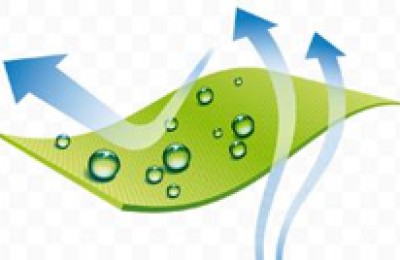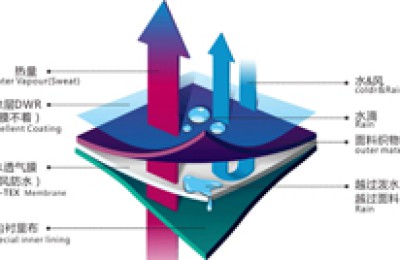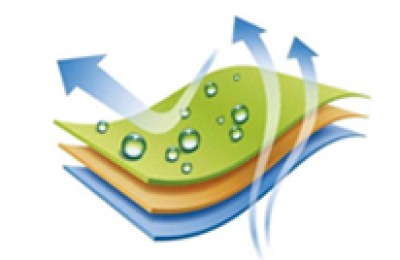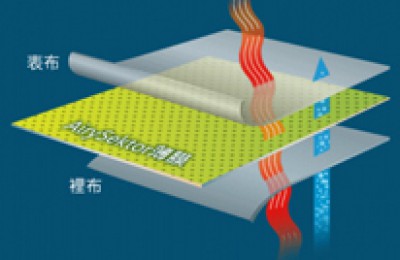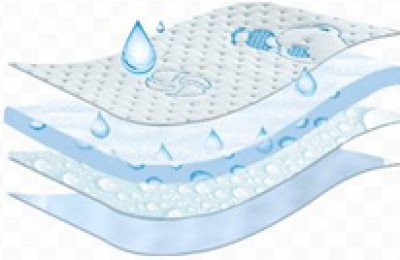China Cotton Textile Industry Association held an online forum for entrepreneurs
Since 2022, the epidemic has continued to superimpose geopolitical conflicts, the global economic recovery has decelerated and downgraded, and stagflation has deepened. Finance, energy, food security, employment, etc. The problem is seriously challenged. Since the first quarter, the epidemic has rebounded in many places in China. Against the backdrop of shrinking demand, supply shocks, and weakening expectations, stabilizing growth, employment, and prices are all facing greater pressure.
However, demand in the textile industry is sluggish, raw material prices are high, and the stability of the industrial chain and supply chain is facing greater challenges. In such a “darkest moment”, industry companies urgently need an injection of confidence and need to communicate with each other to build consensus.
On June 7, the China Cotton Textile Industry Association organized and held an “Online Forum for Entrepreneurs.”
This meeting can be described as a “timely rain”. It has important guiding significance for the majority of cotton textile industry chain companies to understand the current industry development environment, helps companies strengthen their beliefs, and injects confidence into the company’s development in the second half of the year. At the same time, it is of great significance to the company. Specifying the current development strategy has positive reference significance.
He Yaqiong, Director of the Consumer Goods Industry Department of the Ministry of Industry and Information Technology, Cao Xuejun, First-level Inspector, Yu Kun, Director of the Textile Division, and Zong Ruilong, Deputy Director; ChinaTextile Industry United Chairman Sun Ruizhe, Vice Chairman Duan Xiaoping; Secretary of the Party Branch and Chief Supervisor of China Cotton Textile Industry Association Zhu Beina, Chairman Dong Kuiyong and other leaders attended the meeting. The meeting invited Chen Wen, President of Fujian Xinhuayuan Textile Group Co., Ltd., Huang Hongbing, General Manager of Jinlun Card Clothing (Jiangsu) Co., Ltd., Ji Yijun, Party Secretary and General Manager of Nantong Shuanghong Textile Co., Ltd., and Jiang Weimin, General Manager of Black Peony Textile Co., Ltd. , Liu Zibin, Party Secretary, Chairman and President of Lutai Textile Co., Ltd., Su Jianjun, Honorary Chairman of Dezhou Hengfeng Group and General Manager of Xinjiang Dongchunxing Group, Sun Weiting, Chairman of Huafu Fashion Co., Ltd., Xinjiang Zhongtai Textile and Garment Group Co., Ltd. Eleven entrepreneurs including Yu Yajing, Secretary of the Party Committee of the company, Zhang Hongxia, Secretary of the Party Committee and General Manager of Shandong Weiqiao Entrepreneurship Group Co., Ltd., Zhou Quantao, General Manager of Wugang Yinhe Textile Co., Ltd., Zhou Yejun, Secretary of the Party Committee and Chairman of Wuxi Yimian Textile Group Co., Ltd. comminicate. The meeting was chaired by Dong Kuiyong, President of the China Cotton Textile Industry Association. Zheng Jiewen, vice president of China Cotton Textile Industry Association, Li Jie, vice president and secretary-general, Wang Yao and Jing Shenquan, vice presidents, and Ye Jianchun, chief engineer, attended the meeting.
Vice President Duan Xiaoping said in his speech that the overall performance of the textile industry in the first quarter was acceptable, with production, sales, and exports all increasing. From April to May, the industry encountered a series of problems such as sales difficulties, poor logistics, declining orders, frustrated confidence, and Xinjiang cotton. Business risks increased and uncertainties increased. Although faced with many difficulties, many companies have risen to the challenge and improved their internal skills by trying various ways, such as diversifying sales channels, paying close attention to business management, and improving equipment digitization, informatization, and intelligence. We will improve the level of energy conservation and consumption reduction, strengthen tracking and services with overseas customers, etc., and at the same time pay more attention to the security of the capital chain, seek advantages and avoid disadvantages, and prevent business risks. I hope online entrepreneurs can share more insights, good experiences, and good practices. There are only bankrupt companies, not bankrupt industries. Let us work together to achieve steady and long-term progress, and jointly build a new textile of “technology, fashion, and green”.
Xu Xiaoyuan, deputy secretary-general of the China Cotton Textile Association, introduced the current overview, operation and situation of the cotton textile industry, as well as prospects for the later market and research on resumption of work and production. Overall, the spinning and weaving equipment in the cotton textile industry is gradually developing towards automation, intelligence and greening. Production efficiency continues to improve, and yarn and cloth output are basically stable. In 2021, the cotton textile industry will usher in its best year in the past ten years. Yarn and cloth output will increase by about 10% and 6% respectively year-on-year; the consumption of cotton fiber and non-cotton fiber will increase by 17.5% and 21.4% respectively compared with 2020. Differentiation Fiber applications are more competitive. From January to April 2022, the equipment utilization rate declined, and yarn output was in a state of negative growth; sales volume shrank, with a significant year-on-year decrease; the price difference between domestic and foreign cotton fluctuated violently, with an average upside of around 5,200 yuan/ton since May. In terms of companies resuming work and production, the survey on June 1 showed a clear improvement, with capacity utilization gradually increasing, and 56.5% of companies had an operating rate above 90%, an increase of 11.5 percentage points from the survey on May 18.
During the entrepreneur exchange session of the symposium, participating entrepreneurs discussed their business operations from January to May, difficulties encountered and countermeasures taken, market expectations for the third quarter, demands and suggestions for industrial policies, etc. The main points are as follows:
Business situation
In the first five months of this year, most companies’ production and sales data declined year-on-year. Affected by the epidemic, domestic and foreign demand has been weak, consumer purchasing power has declined, and domestic sales and foreign trade market orders have declined. At the same time, logistics is hindered, production and sales are unbalanced, inventory pressure is increasing, and capital chain pressure is increasing. Although they encountered great difficulties, enterprises continued to work hard to ensure employment and protect employees.��Development. The advantages of China’s industrial chain have always existed, and the industry’s resilience against risks and shocks is still strong. We still need to strengthen our confidence in development. The next step is to continue to accelerate the high-quality development of the industry and improve the intelligence and greenness of the cotton spinning industry. Promote collaborative innovation in the industrial chain, support the high-end and diversified development of enterprises, expand new industrial fields and new markets, and improve the market competitiveness of cotton products.
In his concluding speech, President Sun Ruizhe first reported the economic operation situation of the textile industry. From January to February this year, the industrial added value of the textile industry increased at a relatively high rate in the same period last year. It still achieved a certain growth on the basis of rapid growth, with a year-on-year growth of 6.7%, and the average annual growth rate in the two years reached 19.2%. The retail sales of clothing, shoes, hats, and knitted textiles above designated size were 238.2 billion yuan, a year-on-year increase of 4.8%, which was 3 percentage points higher than the growth rate before the epidemic (the same period in 2019). National online retail sales of clothing products increased by 3.9% year-on-year. Exports of textiles and clothing reached US$50.2 billion, exceeding US$50 billion for the first time in the first two months, a year-on-year increase of 8.8%, and the export scale hit a record high for the same period in history. In terms of investment, the textile industry grew by 36.3%, the clothing industry grew by 46.2%, and the chemical fiber industry grew by 53.9%. The growth rates increased by 11.5, 21.6, and 40.5 percentage points respectively compared with the same period last year. However, since March, the textile industry has been facing pressure from rising costs, poor logistics, and insufficient demand. It is experiencing a phased dilemma of insufficient production, high inventory, and shrinking profits. Under the static management measures of the epidemic, textile enterprises and textile and apparel trading markets in the epidemic-related areas have suspended operations and markets. The incoming of raw materials and the outgoing of products have been delayed, resulting in problems such as loss of orders and contract breaches. The upstream supporting facilities rely on Jiangsu, Zhejiang and Shanghai. Other textile companies have also been affected to a certain extent.
The China Textile Federation recently organized a survey on nearly 500 key textile enterprises as well as 15 industrial clusters in the east and 13 industrial parks in the central and western regions around the epidemic. The results showed that enterprises The resumption of work and production is progressing steadily. In late May, some professional markets in Zhejiang and other places were temporarily closed due to the epidemic, but have now resumed business. The operating load has generally recovered. According to survey data, before mid-May, 55% of the surveyed companies in the cotton spinning industry had an operating capacity of less than 80%, and after mid-May, about 56.5% of the surveyed companies had an operating rate of more than 90%. Inventory pressure is prominent. According to the survey, nearly 60% of yarn manufacturers have inventories of one month or more, more than twice the normal inventory, and nearly 30% of enterprises have gray fabric inventories of one month or more.
President Sun Ruizhe pointed out that as the most traditional field and iconic component of the textile industry, cotton textile is not only a basic and supporting industry, but also a leading and strategic force. Industry development is highly related to the national economy and people’s livelihood, and is of special importance in the textile and apparel industry. If the textile industry is the mother industry of China’s modern industry, the cotton spinning industry is the mother industry of China’s textile industry. my country’s cotton textiles and clothing exports account for about 1/4 of the entire industry. The development of the cotton textile industry has attracted global attention. In the context of the deepening game of great powers, the cotton textile industry has also been pushed to the forefront and has become a key factor in international geopolitics. Important battlefield.
Regarding the future development of the industry, Chairman Sun Ruizhe proposed that there should be more practical policies and more market-oriented measures, and greater efforts should be made to promote domestic demand and make more purposeful efforts. First of all, we must effectively promote the implementation of various policies and ensure that preferential policies are effectively implemented by enterprises. In particular, targeted policy support should be provided to representative industries with obvious employment and export advantages. Secondly, coordinate with relevant departments and recommend the adoption of more market-oriented measures in cotton quota issuance, import, circulation and other aspects to ensure the efficient operation of the supply chain; thirdly, greater efforts should be made to encourage domestic demand, and it is recommended to use financial subsidies, tax incentives, and special credits Optimize and upgrade my country’s cotton textile industry chain, and promote the consumption of textiles and clothing, especially Xinjiang cotton products; fourth, make more purposeful efforts to practice internal skills and reorganize the layout. It is recommended to “have the strength to move upstream, the patience to move downstream, and the ability to move downstream.” Have the courage to cross the border and follow closely if you can’t see clearly.”
Finally, he quoted the contemporary poet Zuo Heshui’s Qijue poem “Ode to Cotton” – “I don’t want to be named among the summer flowers, my clean body is covered with clouds in the green field. When the cold comes, I will abandon my son and pursue my great ambitions, and the snow and ice will warm thousands of families in winter.” The cotton spinning industry is encouraged to continue to adhere to its perseverance, dedication and ideological ambitions in the new era.
At the end of the meeting, under the witness of participating leaders and entrepreneurs, the signing ceremony of the “2022 Golden Wheel·National Survey on High-Quality Development of the Cotton Textile Industry” was held. Jing Shenquan, Vice President of the China Cotton Textile Industry Association, and Yao Jian, executive deputy general manager of Jinlun Card Clothing, signed the contract as the representative of both parties. As one of the most important carding equipment suppliers in the cotton textile industry, Jinlun Card Clothing has been actively supporting the development of the cotton textile industry. In this event, Jinlun will cooperate with the China Cotton Textile Industry Association to visit major cotton textile regions and enterprises across the country to discuss Carry out in-depth investigation and research on the next high-quality development direction and path of the industry, sort out and summarize it, and promote advanced practices and experiences to the entire industry.
This entrepreneurs’ symposium has a new format and practical results. It not only brings together some advanced practices to deal with difficulties, but also puts forward practical demands of the industry, and strengthens the development confidence of enterprises. China Textile Federation and China Cotton Industry Association will continue to actively reflect the demands of enterprises and create a better environment for the high-quality development of the industry.
AAA
Disclaimer:
Disclaimer: Some of the texts, pictures, audios, and videos of some articles published on this site are from the Internet and do not represent the views of this site. The copyrights belong to the original authors. If you find that the information reproduced on this website infringes upon your rights and interests, please contact us and we will change or delete it as soon as possible.
AAA��Quality development creates a better environment.
AAA
Disclaimer:
Disclaimer: Some of the texts, pictures, audios, and videos of some articles published on this site are from the Internet and do not represent the views of this site. The copyrights belong to the original authors. If you find that the information reproduced on this website infringes upon your rights and interests, please contact us and we will change or delete it as soon as possible.
AA



